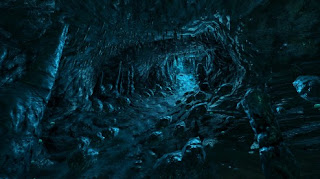Met with Ryan yesterday to chat about how the presentation went and address any issues I had.
First off I need to produce a bunch of ideas/doodles/sketches to convey ideas for the 4 rooms project - how they can tell a story or incorporate themes, in terms of the story of a relationship idea it would be love/hate etc.
I'm also going to be looking into the psychological effects of light and colour, which is something i've always been interested in, and watching a few films that use colour to reinforce the central themes and ideas of the movies. Looking at colour scripts would also be a good idea.
An idea that we stumbled across that I'd really like to explore is the idea of "states of mind". The idea behind this is that each room would be a representation of a different psychological state - depression, joy, anti-stress etc. I actually really like this idea but one of the things I need to watch out for is that I don't just end up creating a "box room" and throwing a lot of props inside it to illustrate the themes. I know that the caves from Dear Esther would be a great example to look into in terms of abstract representation of a declining state of mind, but I'm not sure yet just how literal or abstract I want the "rooms" to be, or even if they can be all structured rooms or feature cave-like structures too. So that's something I need to think about, research and explore.

I've mainly been focusing on studying other games for case studies in relation to my framework, but Ryan suggested I also look into films which make good use of light/colour as being an older, more traditional medium, the core theories will have been established in them, and then adapted over to games (which is a point I have examined briefly in a previous post in relation to how narrative technique for films does not translate over to games very well as they involve spatial exploration and choice, rather than being explicitly shown something important like in films.) He suggested I look at Apocalypse Now and Requiem for a Dream for some good examples of a film which uses lighting to effectively convey it's central themes.
In terms of colour, some films I can look at are the Adventures of Baron Munchausen, which Ryan said has a painterly quality in his scenes so I'm intrigued to have a watch of that, if I can find it.
Finally, I'm also going to try and get my hands on Susperia from director Dario Argento, who uses colour to illustrate delusion and paranoia, so that fits right in to the "states of mind" idea.
Finally, I'm also going to try working with Vray, which I've never used before but is a powerful rendering tool, especially for photo-realistic lighting setups. Depending on how literal or abstract I want these rooms to be, it'll be worth looking into either way.

















